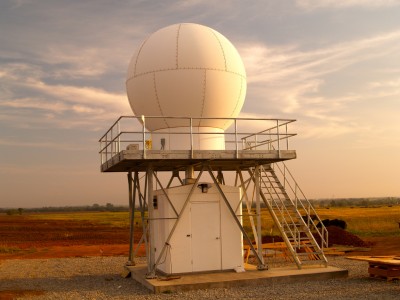You Will Be Missed, Mr. Samaras
Published: 7 June 2013
Around the early 1990s, the U.S. Department of Energy set up the Atmospheric Radiation Measurement (ARM) Program to collect climate and weather-related observations from across the globe. One of its first sites—now sprawling over 143,000 square kilometers and harboring 33 suites of sophisticated instruments—is in Oklahoma.
Around the same time, a man working by himself was designing and building his own weather-measuring probes and driving them around in a truck. For the next twenty years, Tim Samaras would log close to 56,000 kilometers each year, driving across the prairies during peak tornado season. Early in his life, the movie “The Wizard of Oz” had captured Samaras’s imagination. He wanted to understand how tornadoes work, not just chase ’em.
Samaras’s truck turned into a one-of-a-kind mobile weather observatory; to continue his work, he received 18 grants from the National Geographic Society. He holds the Guinness World Record for capturing “the largest drop in atmospheric pressure, 100 hPa in less than one minute.”
I was more than aware of the work that Tim Samaras, “the world’s best-known storm chaser” or as some call him, “the world’s greatest storm researcher“, was doing. The observations his team collected—lightning, tornadoes, and other storm-related observations—changed the way scientists thought about the workings of the atmosphere. But seldom did I think about the challenges that Samaras might have faced in engineering the instruments that he towed around in his mobile weather observatory.

At the ARM Climate Facility, I see first hand how engineers, scientists, and program mangers come together to plan and execute missions, operate mobile facilities, and gather climate and weather observations using (and often building) sophisticated instruments. I witness last-minute decisions they make to obtain critical observations as atmospheric conditions change rapidly during inclement weather, including tornadoes.
I realize now that data are akin to the crystalline end-product of a painstakingly difficult chemistry experiment—months of hard work and years of planning go into collecting those.
I am finally starting to get it: the kind of challenges Samaras, and all others involved in investigating the atmosphere, face on a daily basis.
When I read about the tragic death of Samaras a few days ago, my emotions were myriad. Did we lose one of biggest innovators of atmospheric research instrumentation? Or did we lose a scientist? Or perhaps an adventurer who inspired and thrilled so many kids (including myself) as a storm chaser driving a truck dizzyingly close to a tornado?
I guess it’s all three.
Thank you, Mr. Samaras, for all you have done and inspired. You will be missed, sorely.
(Listen to Samaras’s last interview as he was heading off yet again on a mission—another tornado he and others were following into El Reno, Okla. The one that ultimately claimed the life of Samaras and nine others, including his son Paul Samaras and his long-time colleague, Carl Young.)
Ciao—and remember, measurements matter!
The ARM Climate Research Facility is a DOE Office of Science user facility. The ARM Facility is operated by nine DOE national laboratories, including .
Keep up with the Atmospheric Observer
Updates on ARM news, events, and opportunities delivered to your inbox
ARM User Profile
ARM welcomes users from all institutions and nations. A free ARM user account is needed to access ARM data.


















